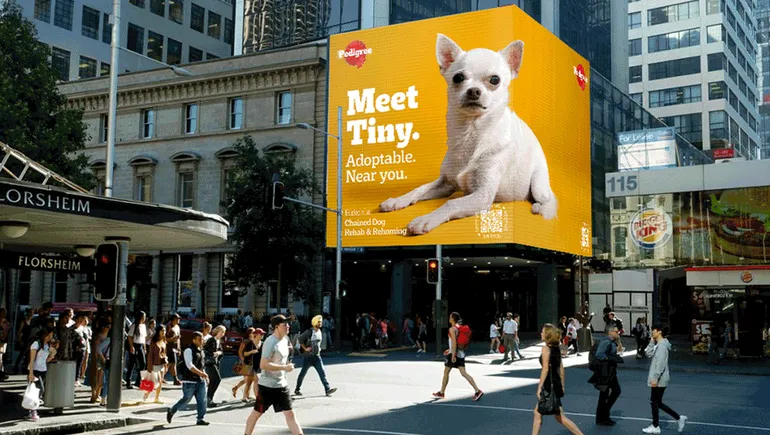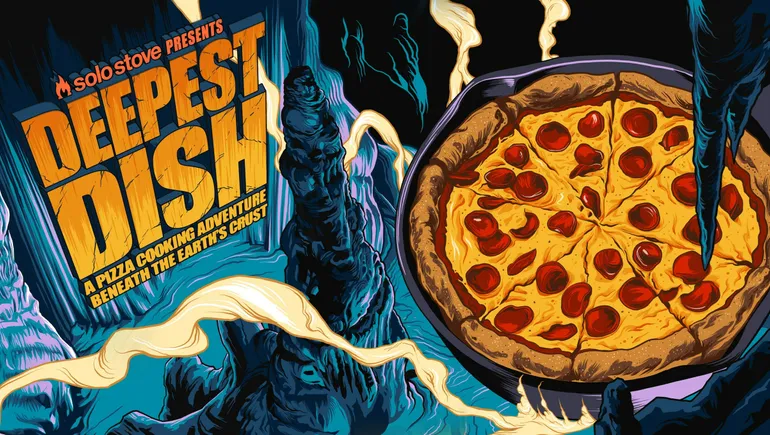
Is the DTC brand aesthetic bad for business?
Editor’s Note: This story is part of a package on direct-to-consumer brands. Find the rest of the stories here.
Much has been made of the fact that direct-to-consumer brands, which claim to be challengers in their respective spaces, look visually similar. Articles have lamented the rise of the “bland” and the boringness associated with it as more direct-to-consumer companies launch.
It starts with a sans serif font and ends with a clean, bold color choice, but there’s more to it than brands playing copycat. Emmett Shine, co-founder and creative director of Pattern, a multi-brand consumer goods company, noted that much of the DTC aesthetic retail has become familiar with is generation-based.
“DTC as it relates to typography, photography, colors, advertisements, Instagram — they’re just forms of expression that essentially are representative of values and aesthetics of, really, millennials,” Shine said.
Prior to closing the company to focus on Pattern, Shine was the co-founder and former executive creative director of Gin Lane, the branding and growth company that helped launch Harry’s and Hims to market, and worked with Warby Parker, Bonobos and Everlane, among others. Shine noted that those early players in particular were inspired to create the DTC style of branding by what came before it: mainly brands that were either corporate juggernauts or had a hipster aesthetic.
“The hipster stuff was plaid and twirly mustaches and everything in the world was made in Brooklyn somehow, and it was bespoke,” Shine said, noting Dollar Shave Club and other early entrants saw a white space there to do something different.
“They looked fundamentally at these markets and said … There’s a real opportunity here to lean into a kind of witty, almost snarky — but not too Gen X snarky — customer service, and a clean aesthetic that says, ‘Hey, take a breath from all the loud noise and commercials and crazy ads, and just listen. We have a pretty good product at a pretty good price. We’re pretty nice people. We’d love to get your business, just talk to us.’ And so I think that as a framing created the next kind of 10 years.”
It’s not a phenomenon unique to DTC brands, either. Shine referred to ads and branding styles as “time capsules” of the society and pop culture of the day, and Victoria Sakal, managing director of brand intelligence at Morning Consult, noted that there are branding trends for every time period.
“Every generation or so you see some of these trends around design or experience come through,” Sakal said, “and if they work, there’s probably a reason that people are flocking to them.”
Retail just happens to be in the DTC generation at the moment.
The DTC promise
The direct-to-consumer promise is well documented: a simpler shopping experience based on cutting out the middleman and offering fewer, but higher quality, products than traditional players. With that goal comes a similar shopping experience, which means that not only do the basic logos of DTC brands match, but so do their digital experiences.
“Designing a digital experience that can work for the consumer — that’s the piece that is very, very consistent across many of the DTCs,” said Zach Weinberg, director of advisory at Gartner, noting that once a category has been established is when brands start to look the same. “If you look at, let’s say, the furniture category: You compare Burrow against some of the other DTC companies and you see that also the branding and the design is similar. But the reason for that is because that’s the experience and that is the mechanic that they are trying to create — and that’s something that I think has proven successful over time.”
On the branding side, in particular, Weinberg said many DTC brands have been focused on creating companies with a personality and values that consumers can align with themselves, a position that “speaks to a universal truth of a consumer base.” It might be sustainability or another element of corporate behavior that consumers have come to care more about over the years, but the niche focus of DTCs allows them to develop distinct personalities, Weinberg said, and “find like-minded friends, let’s call them, instead of consumers, that you want to talk to. And those people want to talk back.”
What makes DTCs appear so similar is that many of them are trying to talk to the same customer base, Shine said, namely millennials. Adopting the now-familiar branding themes of other DTCs can signal to consumers that the company they’re looking at is part of the set of brands they already trust to understand their needs.
“I’ll see an ad for God-knows-what brand and it’ll have some hip serif font with some clean minimal background and I go ‘Here we go again,'” Shine said. “But at the same time, I’m going to go, ‘They probably get it.'”
“I’ll see an ad for God-knows-what brand and it’ll have some hip serif font with some clean minimal background and I go ‘Here we go again.’ … But at the same time, I’m going to go, ‘They probably get it.'”
Emmett Shine
Co-founder and Creative Director of Pattern
Shine added, though, that while there is a DTC aesthetic, the cohort is not as similar as it looks from the outside. In reality, creating differentiated DTC branding is a dance between building something that is familiar and will appeal to the millennial audience, and also adding distinctive features to help tell a certain brand’s story. He likened the differences in DTC branding to the small things private school students do to stand out from others while they’re all still wearing the same uniform.
“When you’re trying to design any brand, you figure out the denominator: OK, this is the core, we’re trying to talk to you. This is the vibe they like,” Shine said. “And then the numerator is, how can you freak it a little bit to be kind of custom per the aesthetic or the values that the founders have and that they’re trying to give their interpretation on? If someone just says, ‘Yo, copy this and make it the same. I just want to fit in,’ you never want to do that job because there’s no pink streak in the hair or no fingernail polish or no unique shoelaces.”
That streak of individuality can impact brand choice, according to Sakal. But there’s nothing inherently wrong with DTC brands pursuing an aesthetic and a digital experience that look and feel similar, so long as a business can offer something unique to consumers. And part of the reason for the similarity is out of the DTCs’ hands.
“It’s also really easy for me to just engage the Red Antlers, the Gin Lanes, all the branding businesses that built the initial winners,” Alex Song, founder and CEO of the Innovation Department, said, noting the influence of venture capital firms on the process. “The VCs are like, ‘Hey, I know the contact — they’re dependable, they’re good. They’re the ones that did these other guys so they got the winning formula.'”
So what if they’re all the same?
Rather than turning off customers, the similarities in DTC brands can actually work in their favor, by putting consumers in a place where they feel comfortable. Branding is tied to human psychology and a longing for feelings of safety and familiarity, according to Song.
“Consumers are creatures that like familiarity,” Song said. “We like to go buy things and use things and be around things that feel familiar, feel comfortable and feel cozy to us. So when you see that you had these styles, these palettes of colors, these font types, across your Instagram for so long, you gravitate towards things that also feel fun and familiar, versus something that’s way off base and it just doesn’t resonate with you the same way because it just isn’t what you’re used to seeing.”
So, too, with the similarities in the shopping experiences DTCs create, Weinberg said. He noted that many DTCs have a “how it works” section on the site to explain value points like month-long return windows or a subscription function or how the product itself works. As a result, consumers have come to look for the same experience, perhaps subconsciously, because they’re used to it. Those that fall outside of that experience may have to work harder for consumer attention as a result, rather than consumers growing tired of shopping similar brands.
“The ones who do it really well will be recognized and will be familiar to new consumers, but the ones who are different, consumers will say, ‘Hey, this is not the same experience that I’ve seen on some of these other companies and they’ll actually need to make a decision at that zero moment of truth when they first enter a site,” Weinberg said. “‘Do I like the way that this is even browsing? And do I find it familiar?’ And if I don’t, that’s when they may drop off, as opposed to the other way around.”
Outside of the possibility of consumer fatigue, one of the biggest risks DTCs could face from sticking to the same aesthetic year after year is the loss of their leading-edge status, Shine noted. DTCs with “massive revenue targets and goals” would likely suffer from not maturing their brand over time, but it’s not necessarily a death knell.
“I think there are brands that were from the ’50s, ’60s, ’70s, ’80s and ’90s, that still market as if it’s that time, and they do fine,” Shine said. “I think they’re just not changing the cultural narrative.”
“There’s a real authenticity that comes to a brand from a founding team that you really can’t recreate in a lab, so to speak.”

Andrea Hippeau
Principal at Lerer Hippeau
For the moment, at least, DTCs are hitting on trends that consumers appreciate, including purposeful branding and a dose of authenticity that wasn’t always true of businesses. Sakal noted that some may “get a bad rap” for their execution of those things, but at their core, they’re acting on consumer behavior trends.
It isn’t turning away venture capital firms, either. Andrea Hippeau, a principal at Lerer Hippeau, which focuses on early-stage funding, noted that there are plenty of “me too” brands created by the DTC formula, but she looks to the founding team to discern how deep the brand message goes.
“There’s a real authenticity that comes to a brand from a founding team that you really can’t recreate in a lab, so to speak,” Hippeau said, noting her firm looks for mission-driven companies when investing. “That’s something that you can sniff out pretty quickly is if a brand is truly authentic. What’s their mission and are they true to it? Is it a real mission or are they just donating one pair of whatever it might be just to kind of say that they do?”
Branding is cyclical and DTC’s cycle is not over yet. But as DTC brands continue to enter the space, or grow their businesses, there’s a new cycle emerging for Gen Zs that is anti to the millennial appeal that DTCs hold, according to Shine. He said DTC branding has become a “dominant visual language of communication,” and may stay so for the next five to ten years, but added that younger generations are more focused on a rebellious “frumpy on purpose” vibe.
“You’ve got the next generation going, ‘OK, we’ve had 10 years of sans serif, millennial pink, different bright colors, everything is clean, there’s hands in all the photographs, everything is bright and blown out — we’re just going to funk this up,'” Shine said.
Maturing the aesthetic
Shine may have stepped out of the DTC branding world, but he didn’t give up on DTCs, or on the ability of the original pioneers to transform their marketing to fit a new generation of shoppers that’s “a bit more loose and a bit more messy.”
He cited Recess and Ghia as in-between brands of the millennial “premium mediocre” aesthetic and the Gen Z “domestic cozy” aesthetic (terms coined by Venkatesh Rao of Ribbonfarm). His own company, Pattern, is also trying to bridge the gap between those two with its brands.
“We are still using notions of premium mediocre in terms of some of our advertising and some of our site’s design,” Shine said. “But we are fusing it I think with notions of domestic cozy, in the sense of, we’re not trying to be too slick and too manufactured. We’re trying to espouse values around, you know, ‘Don’t try to be a superstar at work. Don’t try to be a superstar on the internet. Spend more time at home, do things that are cozy and intrinsically motivated.'”
Shine added that he was impressed with a Harry’s TV ad recently that was a departure from their previous marketing, and “a really nice maturation.” For others in the space, it’s possible to mature their marketing as well while not departing too heavily from the millennial aesthetic that made them so successful in the first place.
“You kind of expect a business to stay at its core,” Shine said. “Like Chanel or something — they can do reinterpretation and reinvention, but it’s still, ‘Yo, I’m a French, luxury, atelier-based business.'”
Outside of the classic DTC brands, Song cited Liquid Death and Magic Spoon as examples of very different branding that has worked as well. But even those brands will have followers, and they’re likely to show up on consumers’ Instagram feeds, Song noted, reinforcing the feeling of sameness through an echo chamber effect.
Indeed, one of the defining features of DTC marketing is social media. Companies including Chewy, Wayfair and Casper have shelled out millions on advertising while running up ever higher net losses. The branding similarity may not be a problem, but “creating thumb-stopping power” is, Weinberg said.
“It’s not good enough anymore to just have really strong lifestyle branding with a strong message,” Weinberg said. “DTC brands need to do more to differentiate and create that thumb-stopping power within those social engagement platforms that actually communicates a differentiated message, not just a pretty brand.”
So maybe, in the long run, the biggest problem for DTC brands is not their branding. It’s how they differentiate on social platforms or through ad campaigns, how they mature their brand over the years, and how they tackle the real threat: profitability.
“I think we are experiencing fatigue right now. I think that’s fundamentally what you’re hearing and that’s what people are writing about,” Song said. “But the truth is, things change when they stop working.”





